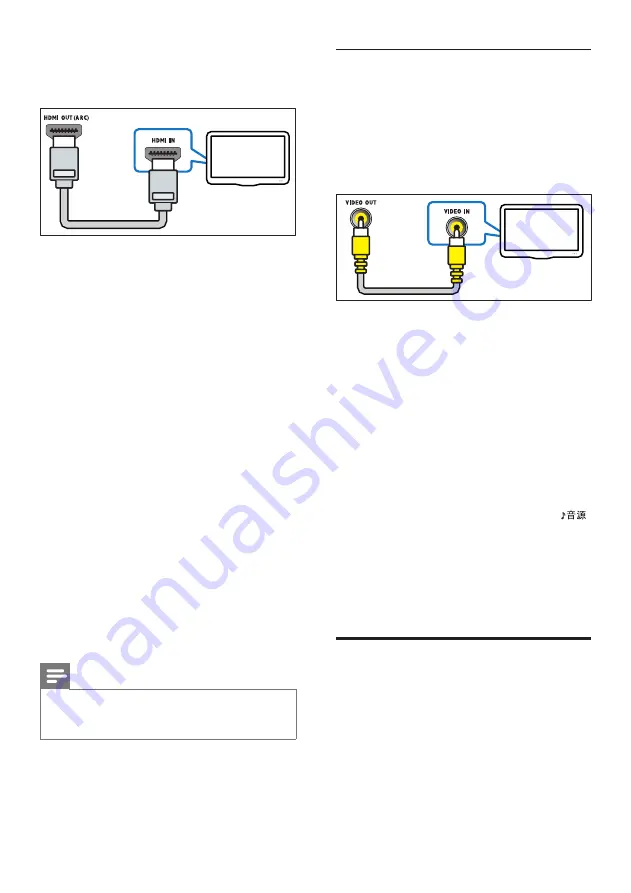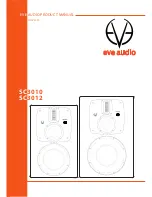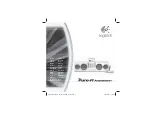
13
EN
If your TV is not HDMI ARC compliant, connect
your home theater to the TV through a
standard HDMI connection.
1
Using a High Speed HDMI cable, connect
the
HDMI OUT (ARC)
connector on your
home theater to the
HDMI
connector on
the TV.
2
Connect an audio cable to hear the TV
audio through your home theater (see
'Connect audio from TV and other devices'
3
On your TV, turn on HDMI-CEC
operations. For details, see the TV user
manual.
•
HDMI-CEC is a feature that enables
CEC compliant devices that are
controlled by a single remote control,
such as volume control for both the
TV and the home theater. (see 'Set
up EasyLink (HDMI-CEC control)' on
page 14)
4
If you cannot hear the TV audio through
your home theater, set up the audio
manually. (see 'Set up the audio' on page
15)
Note
•
If your TV has a DVI connector, you can use an HDMI/
DVI adapter to connect to TV. However, some of the
features may not be available.
TV
Option 3: Connect to the TV through
composite video
Basic quality video
If your TV does not have HDMI connectors, use
a composite video connection. A composite
connection does not support high-definition
video.
1
Using a composite video cable, connect
the
VIDEO OUT
connector on your
home theater to the
VIDEO IN
connector
on the TV.
•
The composite video connector might
be labeled
AV IN
,
COMPOSITE
, or
BASEBAND
.
2
Connect an audio cable to hear the TV
audio through your home theater (see
'Connect audio from TV and other devices'
on page 13).
3
When you watch TV programs, press
on your home theater repeatedly to select
the correct audio input.
4
When you watch videos, switch your TV to
the correct video input. For details, see the
TV user manual.
Connect audio from TV and
other devices
Play audio from TV or other devices through
your home theater speakers.
Use the best quality connection available on
your TV, home theater, and other devices.
TV














































